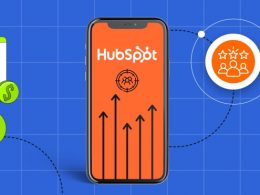We, accountants (anyone who deals with accounting, including various titles or certifications like EA, bookkeeper, controller, CAS professional, CPA, and more), are way too willing to work around limited reporting options given by technology providers. We are always ready to create yet another spreadsheet to help us categorize, organize, and eventually reconcile the information for posting to our accounting application. We can create a pivot table for that! Yay!
I have to admit my own eagerness to jump to a pivot table as soon as possible. But let me start from the very beginning and tell you how I set off on my accounting journey.
The hierarchy of needs when you run a business: Putting your oxygen mask first
I co-founded a bookkeeping business for wineries in 2014 (we closed it in 2022 due to staffing challenges). Our clients tended to rely on industry-specific solutions that focused on usability or solved specialized operational needs (like managing production flow or farm payroll) and were less focused on the needs of accountants. Shocking, I know. So we were left to try to make sense of the data that we extracted and reconciled at the end of the month.
We would spend hours trying to match sales information coming from our clients’ E-commerce and Retail Tasting room (Point of Sale or POS) solutions to the bank deposit. It was a nightmare involving countless pivot tables and INDEX MATCH functions in Excel. We had to deal with timing differences between order dates, shipping dates, and payment processing dates while digging to determine processor fee deductions and sales tax, on a given day.
We never stopped to see if there was an automated solution to our problem.
The longer we have been in this profession, the less likely we are to look for new ways to do the things we have found a way to do in Microsoft Excel. What is the impact to our clients of this focus on working around challenges like this? What is the cost to our own business and personal lives?
Empowering your business: Being at the steering wheel of the technology stack
There is a better way. It’s time we start looking at all of the available tools that can help us get faster and better insights from operational applications.
I launched an online training program during Covid and for the first time had online payments hitting my bank account. What a thrill!! I highly recommend it. But at the same time, it was a nightmare to track sales. I was doing a one-at-a-time sales receipt for each transaction and having to figure out the associated fees, customer info, and line item each time a deposit hit my bank.
And then I discovered Synder at a technology conference. It magically manages the entire flow from order to sale to bank deposit for me. It connects to my website store and my payment gateway (Stripe) and then to my accounting software. It gives me immediate insights on the progress of my sales – across different sales sites.
If only I had discovered it sooner. If only my bookkeeper had known about it. (Yes, I have a bookkeeper for my own business.) As a client myself, I can see how much that would have helped me.
Closing thoughts
If we, accountants, can work around the idea of finding Excel workarounds for every challenge we face and instead seek to help our clients find a better way, or apply technology, or get training on the software they currently have, we can make a huge difference in the lives of our clients. Every line item on that perfectly balanced Trial Balance represents an opportunity for us to help our clients.
Our clients need us to be informed about available solutions. Only then can we free them from mundane transaction management and data manipulation and provide them with timely, relevant insights they can use to make better decisions. It’s time we dig deeper within the financial statements to uncover real operational and business challenges and then help our clients find solutions.







.png)
